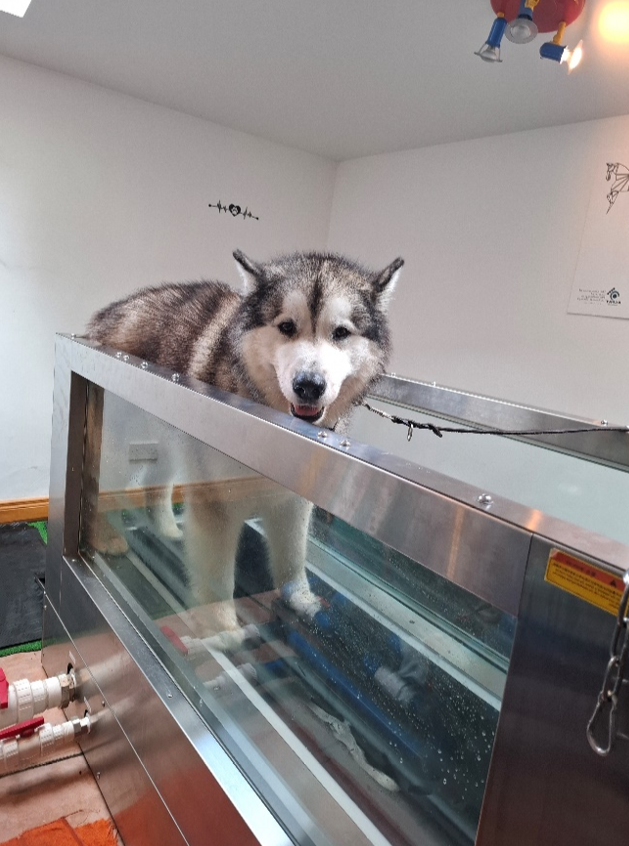Physiotherapy and hydrotherapy in the management of Elbow Dysplasia
- Vet
- May 16
- 2 min read
Elbow dysplasia describes a developmental abnormality in the elbow join. The elbow joint is complex structure of three bones. If the three bones do not fit together and move in relation to each other correctly then abnormal force is exerted on a concentrated area of the elbow joint and its articular cartilage causing pain and lameness.

Management of elbow dysplasia can be conservative and surgical however hydrotherapy and physiotherapy can help elbow dysplasia and improve mobility in either treatment option.
Conservative management of elbow dysplasia
Physiotherapy can help to alleviate the symptoms of elbow dysplasia and enhance your dog’s function and wellbeing.
Aims of rehabilitation
Reduce pain and swelling
Maintain and/or increase joint mobility with a specific joint stability, stretching and strength programme
Maintain and/or increase muscle mass
Physiotherapy treatment options
Manual therapy techniques such as myofascial, joint mobilisations and stretches
Electrotherapy such as low-level laser and electromuscular stimulation
Therapeutic exercises for strengthening
Hydrotherapy options
Water-based therapy is a perfect environment for a dog with elbow dysplasia. The warm, supportive medium provides pain relief and allows mobilisation of joints in a buoyant / semi-buoyant environment, maintenance and strengthening of specific muscle groups and enhancement of general cardiovascular fitness which on land might not be so easy.Hydrotherapy can be provided in our underwater treadmill.
What can I do to help my pet at home?
A specific home exercise programme and walking advice will be made for your dog. This will be practiced and instructed by your chartered physiotherapist. Advice on activities of daily living including how best to assist your dog in and out of a car, modification of slippery floors, and avoidance of high impact activities such as jumping up or down from furniture, running up and down stairs.
The following table outlines an example elbow dysplasia rehabilitation plan:*
Timescale | goals | Treatment options |
0-2 weeks | Reduce Pain and swelling Reduce muscular guarding and maintain soft tissue flexibility Allow careful limb loading |
|
2-4 weeks | Increase muscle mass Progressive limb loading Maintain soft tissue length and flexibility Management at home Commence hydrotherapy | · Low-level exercise programme · Controlled exercise · neuromuscular electrical stimulation · Stretches and passive range of motion · Advice regarding home environment temporary adaptations and handling with sling |
4-6 weeks | Increase exercise tolerance Core stability | · pole work, gradients, steps and walking over different terrain. · Balance and co-ordination exercises · Hydrotherapy treadmill |
6-12 weeks | Improve functional movement Continue to increase exercise tolerance Continue hip stability | · Continue as above add low level agility work · stability exercises with wobbles boards |
12+ weeks | Return to full function or establish deficits and advise re long-term management. | · Return to off lead exercise gradually · Long term management strategies |
*Please note that rehabilitation plans should only be followed under the guidance of a qualified rehabilitation professional, who will be able to provide a tailored plan based on the individual patient’s rehabilitation needs.



Comments